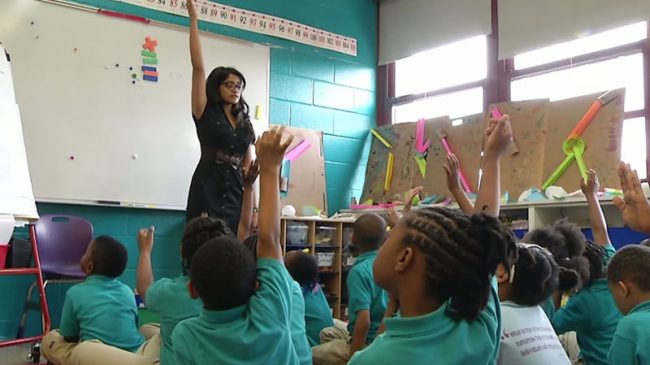Teachers in Yuba City, California recently finished a week-long strike demanding an across-the-board pay-raise. They got it, but in a particularly pernicious way. The money for the raise came out of funds intended specifically to help disadvantaged students under California’s education funding formula. As with many things in education policy, it’s the kind of surreal truth that’s stranger than fiction. Yet the Yuba City strike is part of an all-too-common pattern around the state of focusing on the concerns of the adults rather than the kids in the system.
The California’s Local Control Funding Formula (LCFF) is one of the country’s largest exercises in student-based budgeting at the state level. Under the formula, every student receives the same amount of base funding, but the LCFF adds extra dollars for disadvantaged students such as homeless and foster children, English-language-learners, and those who live in poverty. The formula also provides districts with over 55% disadvantaged students additional “concentration” grants. By allowing education dollars to follow students and their unique needs to whatever district they attend, the LCFF represents a massive improvement from the older revenue limit system, which drowned central offices in the red tape of over 50 categorical funding streams and helped institutionalized inequities in per-pupil spending. Allowing state education dollars to follow individual students to their districts was California’s attempt to ensure that no matter where kids went, resources for their unique needs would follow. Yuba City is the latest of many steps, regardless of intention, to undermine this trend.
Yuba City Unified School District in the rural Central Valley of California has 13,000 students, 71 percent of whom are high-needs. Teachers argued that because a high percentage of their students were disadvantaged, an across-the-board raise was the best way to serve them all by retaining and attracting quality teachers. But serving disadvantaged kids means using the money set aside to help them to offer them more actual resources, not fund half of your own 11% raise from that pot.
At the Reason Foundation’s Future of Education Finance Summit in Baltimore in July, keynote speaker Marguerite Roza talked about the importance of thinking about the tradeoffs involved in education spending. Economics teaches us that everything we do bears an opportunity cost. Education is no different. Teachers may well value a raise, but they may value smaller class sizes, new school equipment, or extra instructional aides more. When trying to promote equity by making sure resources are following the students who need them most, this mindset is even more important. Thanks to the LCFF, these tradeoffs are more explicit than ever, for in past years it may have been difficult to even know if resources for disadvantaged students were being adequately delivered thanks to the alphabet soup of categorical funding streams to navigate.
Yuba City isn’t the only district reallocating funds intended for disadvantaged students. Last year, a joint UC Berkeley-United Way review of the Los Angeles Unified School District’s (LAUSD) budget found the same trend. Governor Jerry Brown’s allocated an extra $145 million to the LAUSD in 2015 specifically to help disadvantaged students under the LCFF. Despite the school board’s plans, the review found that the district simply spread its extra dollars across its schools at the elementary and middle and levels without regard for its intended purpose. In other words, the disadvantaged students got short-changed.
It’s true that many California teachers have worked without recent raises and faced furloughs and layoffs in recent years. Ensuring your teachers are paid sufficiently is part of any district superintendent’s job. But across-the-board raises for the adults should never come at the expense of (legally required) targeted assistance for the kids who need it the most.
